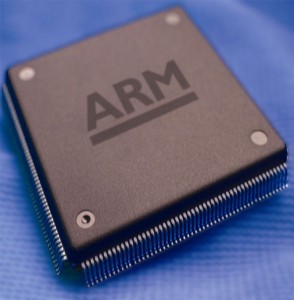Disruption Coming of Age: Apple Reportedly Considering Replacing Intel with ARM Chips in iMacs and Macbooks
Intel could be in a little bit of trouble in its battle to fight off ARM. ARM chips, as I have discussed previously, are classic examples of a disruptive product. To recap, ARM started out making low-powered mobile chips before it was cool (or profitable), carved out a niche and gradually began to scale up the value chain. Now ARM chips are becoming more powerful and Intel is struggling to make their chips as efficient as their scrappy competitor. (Note: ARM does not manufacture their own chips like Intel, but instead licenses its technology to many companies, including Apple, Samsung, Microsoft, RIM and Nvidia, among many others.)
Today, Bloomberg News is reporting that Apple is considering switching away from Intel chips in their Mac products because the line between mobile devices, laptops and desktops is blurring. Apple’s motivation, according to the article, is pretty straightforward:
As handheld devices increasingly function like PCs, the engineers working on this project within Apple envision machines that use a common chip design. If Apple Chief Executive Officer Tim Cook wants to offer the consumer of 2017 and beyond a seamless experience on laptops, phones, tablets and televisions, it will be easier to build if all the devices have a consistent underlying chip architecture, according to one of the people.
However, Intel is fighting hard to hold on to their current market share and has moved to compete directly against ARM’s strength — efficiency:
Intel helped allay some of Apple’s most pressing concerns when it announced that it would develop chips that don’t require as much power as existing chips, this person said. That pledge to prioritize power conservation led some within Apple to conclude the company has a few years before it would need to make any change, if it makes a switch at all, this person said.
And if Apple can’t design ARM-based chips that are far more powerful than current models, the company would likely need to stay with Intel to satisfy Mac power users, who need lots of computing performance for tasks such as developing software or doing high-end graphics.
Given that iMacs and MacBooks — according to Phil Schiller at Apple’s most recent product launch — are the most popular line of desktops and laptops ever to be sold, losing the battle to remain their central processing unit would be devastating to Intel. Conversely, it would signal that ARM is now the top-dog in the microprocessor world and might be the symbolic line that signals that disruption has officially occurred.
The fight between Intel and ARM is just one example of how the mobile revolution threatens to drastically alter the high-tech playing field. Internet giants will be challenged by mobile applications. And, like Intel vs. ARM, these giants of the desktop era are aggressively trying to develop strategies to compete with the Yelps and OpenTables of the world. And just as in the semiconductor space, mobile competitors are not going to simply stick to mobile apps — they will apply what they learned in the mobile world and scale into the more traditional Internet ecosystem (look at Instagram’s announcement today as one example of this trend). Although it is hard to say who will come out on top, cross-platform and cross-ecosystem competition should make for an exciting short- to mid-term battle for the hearts (and wallets) of users.









